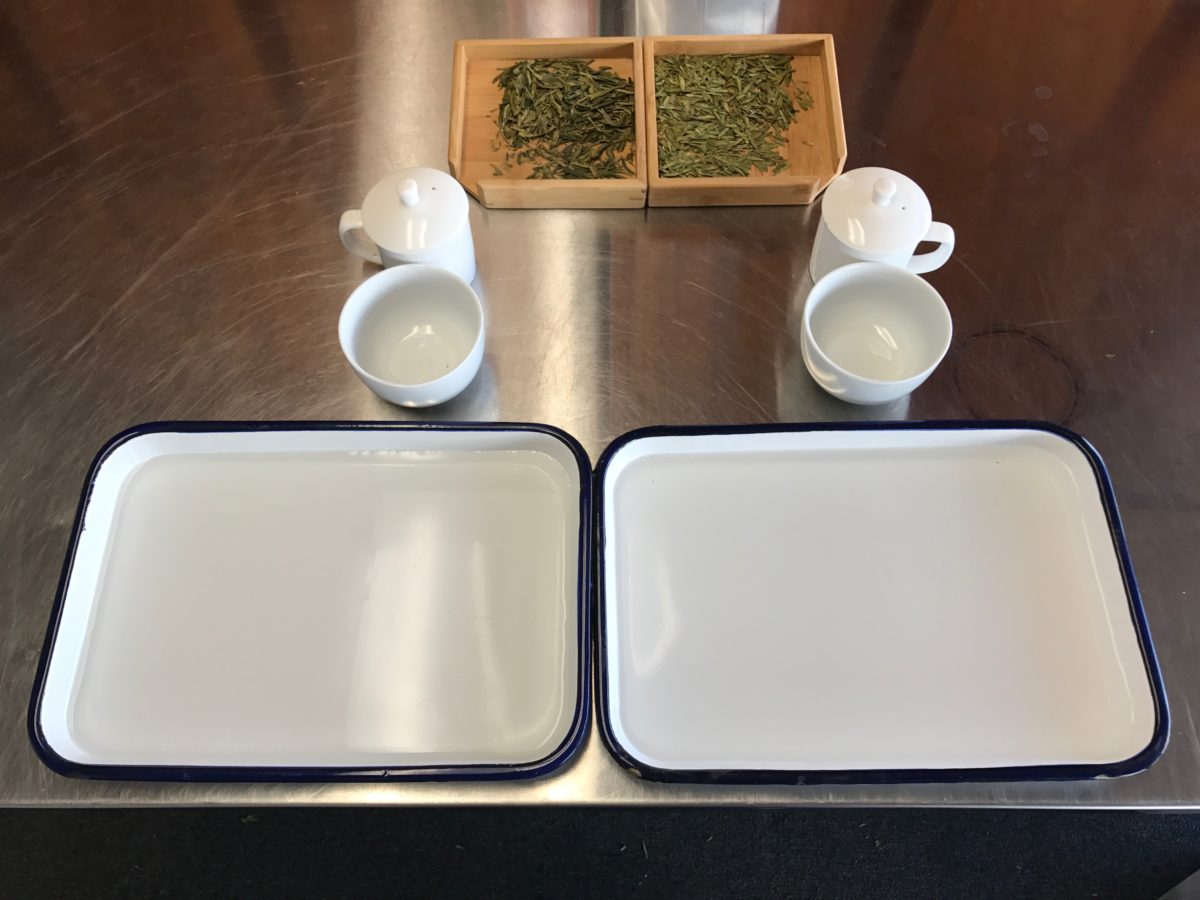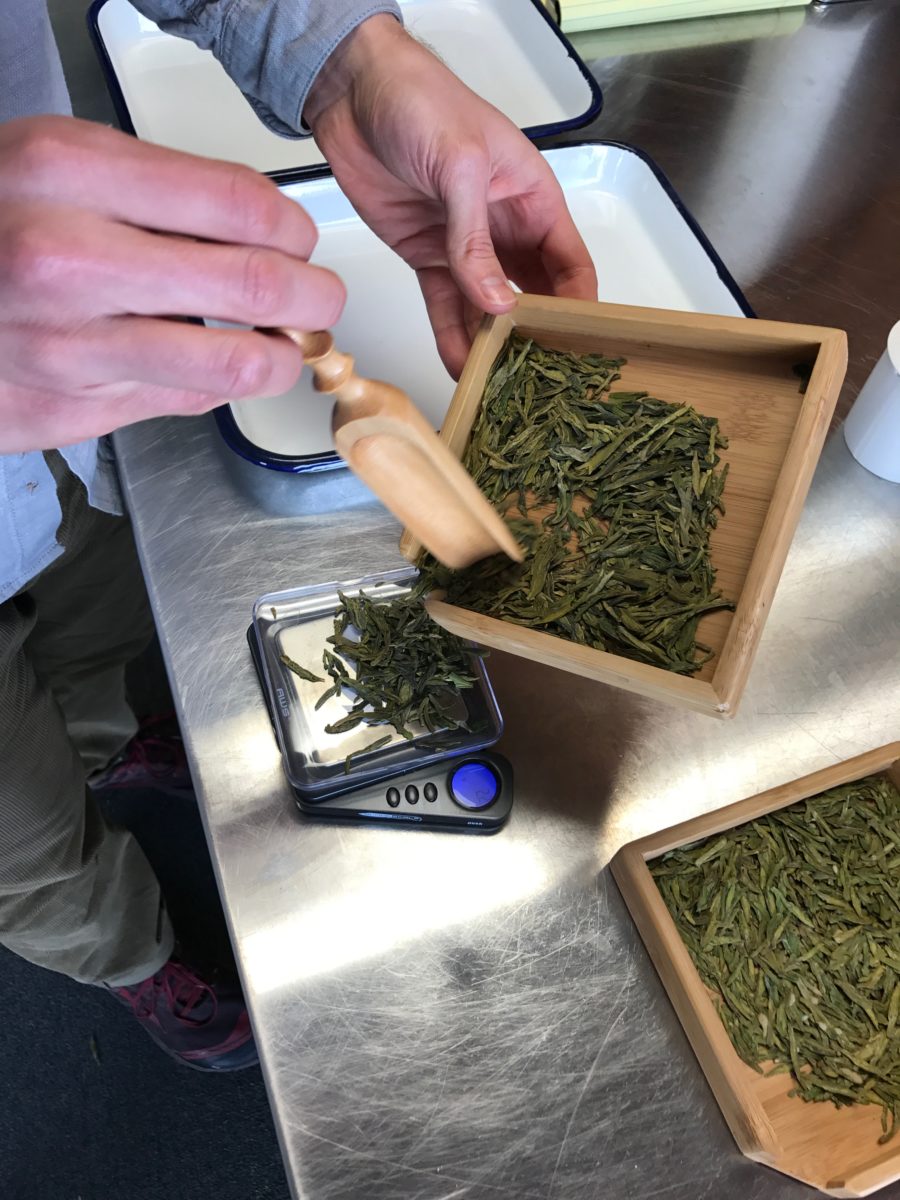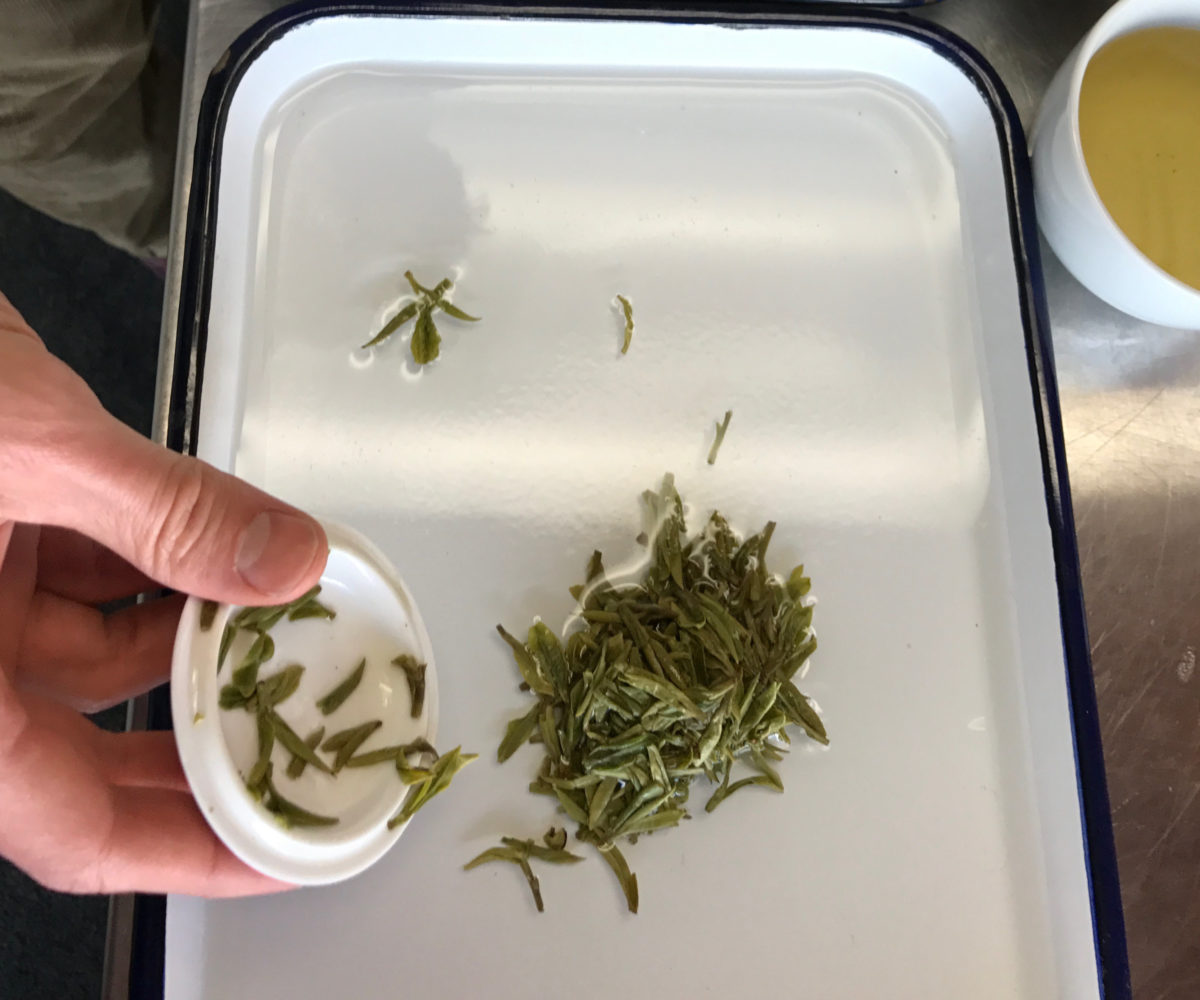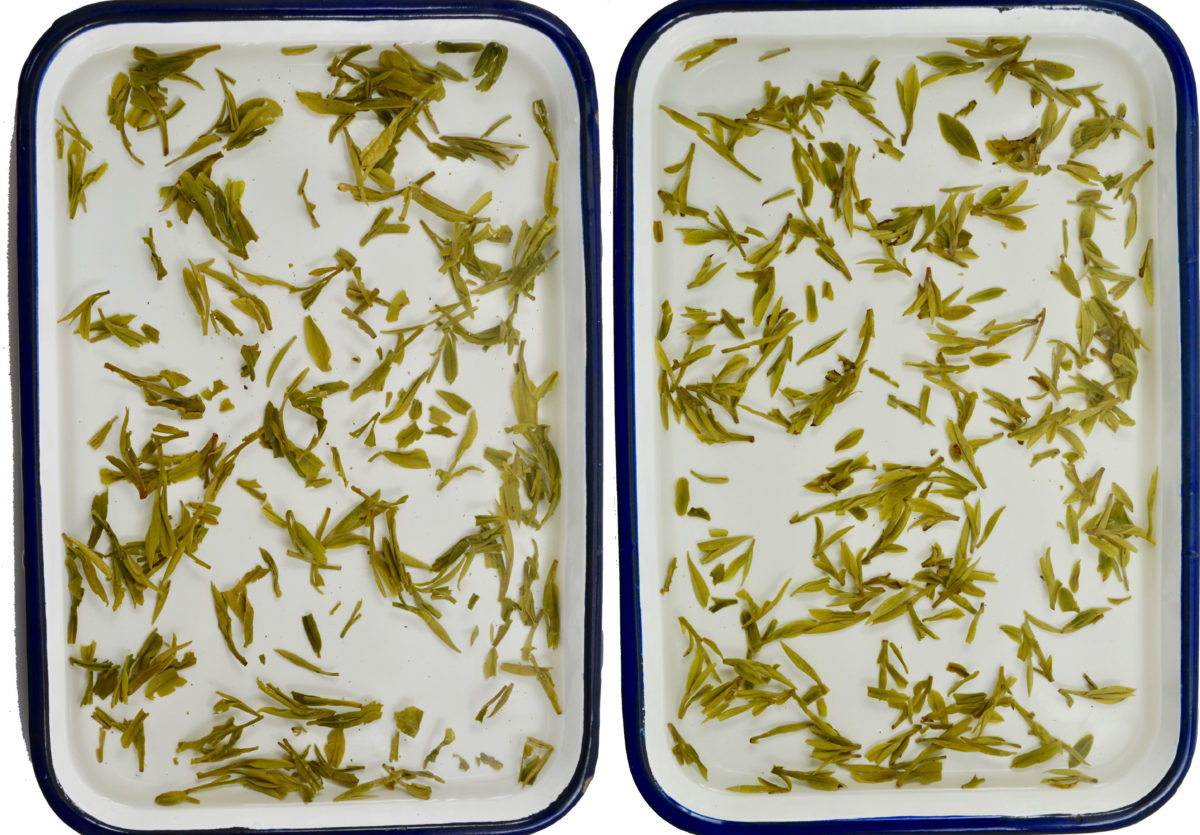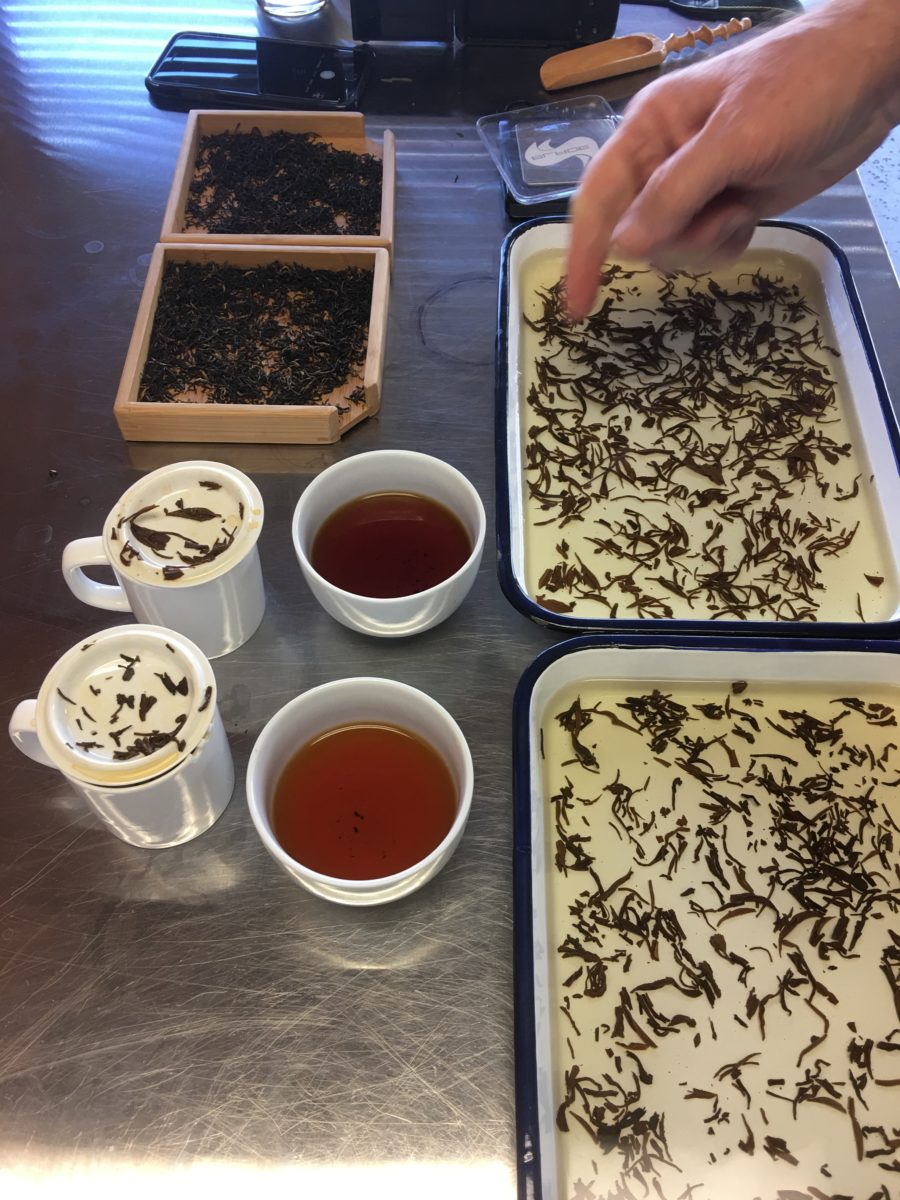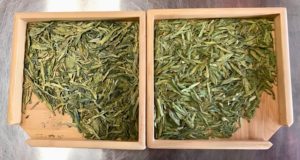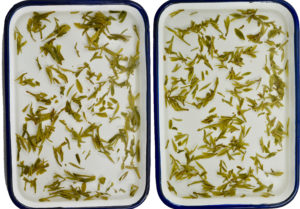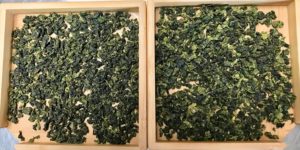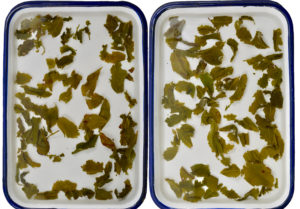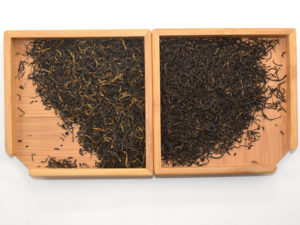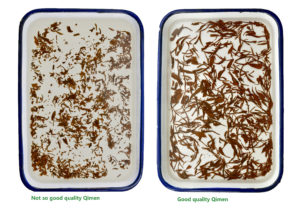Are you getting the quality tea you paid for?
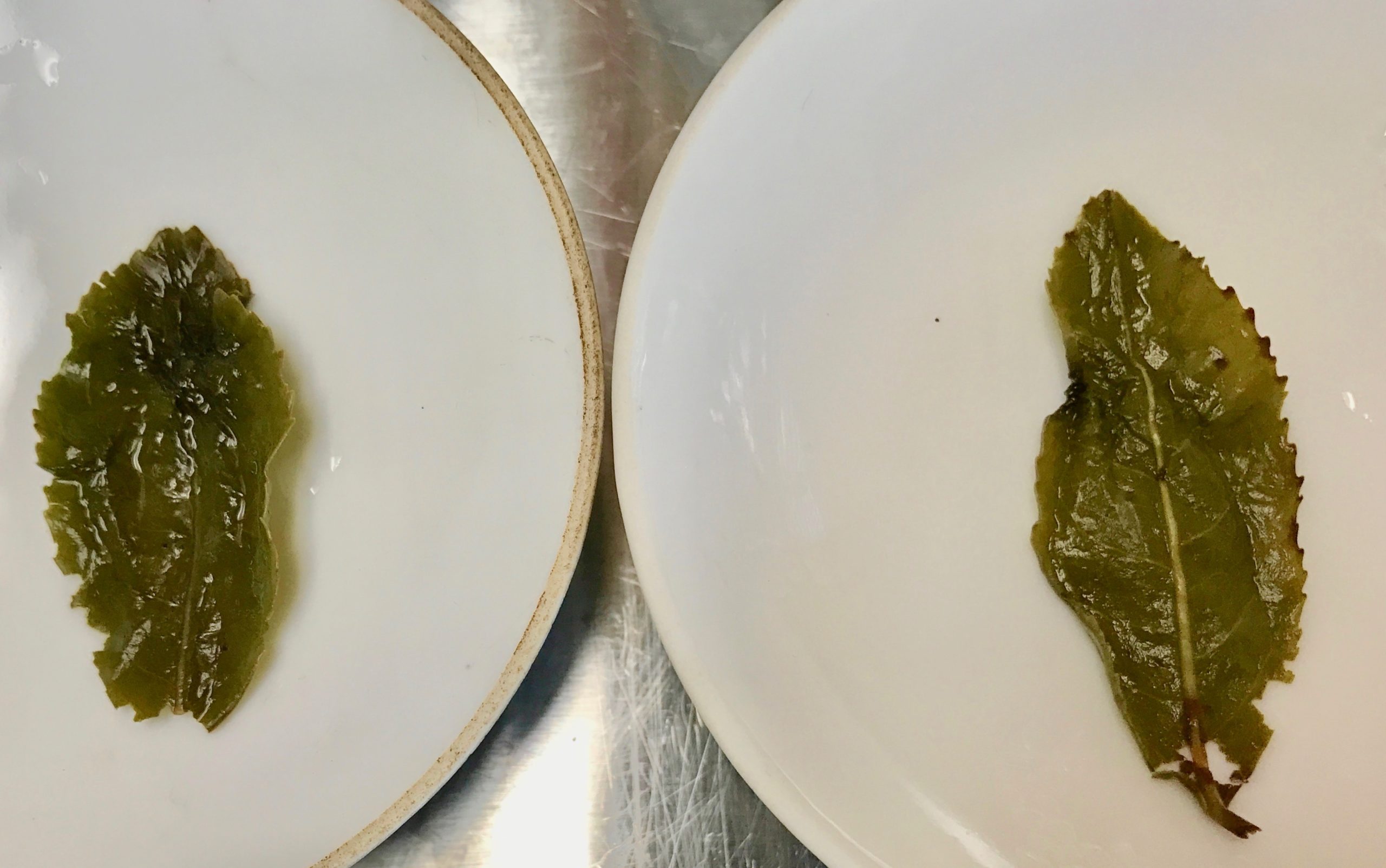
Determining tea quality by sight alone is difficult.
Tea Buyer’s Guide
At first glance, one pile of leaves closely resembles another, especially when dry. But float those same leaves, after steeping, in a shallow white porcelain tray of water and you can quickly tell whether the money you just paid for that special tea was well spent.
Seven Cups Fine Chinese Tea founder Austin Hodge is no fortune teller but his presentation on how to judge quality by reading the leaves could save you a fortune. The International Specialty Tea Association he founded lists 12 elements necessary for authentication and assessment of quality tea. This article examines three, beginning with the condition of the leaf.
The first step in making a quality tea begins in the garden, by adherence to harvesting specific leaves—this is the plucking standard. Production requirements for any given type of tea will dictate which plucking standard is ideal. However, all quality loose leaf tea, regardless of origin or cultivar, will show characteristics indicative of better tea when a consistent plucking standard is followed. In other words, the plucking standard tells the story of that tea.
“A well-processed whole tea leaf should be completely intact, unbroken, pristine (with oolongs being one exception),” says
Hodge. The condition of the leaves is the first consideration because it establishes the skill of the tea maker. “It takes skill not to break a tea leaf during the tea making process,” he says.
What’s helpful for tea consumers is these specific leaf characteristics (listed here) can be objectively observed by consumers with even a minimal education in tea.
Condition of the leaf
The act of plucking a leaf influences its flavor. Leaves that are cut from the branch bleed, initiating the release of often-bitter chemicals that the plant uses to ward off predators. These chemicals differ from the natural astringency experienced when drinking quality tea. Leaves skillfully detached with a quick snap from the branch will bleed much less than tea that is harvested mechanically.
Uniformity
Leaves of uniform size guarantee consistency of character. Tea grows quickly but not uniformly in the garden. The chemical makeup of leaves in the cool first light of day changes by the hour. As such, there is a natural variation in the composition of any batch of harvested leaves that cannot be ignored by the teamaker. Once gathered, hand sorting and separating out of this variety is better than machine batch processing, as experienced humans know the subtle nature of the leaves from their land.
In some instances, hand-processed leaves are so uniform they float vertically in the water, considered a sign of good luck and evidence of well-sorted uniform leaf tea.
Color
The color of dry tea leaves, wet tea leaves, and the liquor from their infusion also offer clues about the processing, how the leaves were stored, and their age. Color is an indication of authenticity. The color of early-season Anji Bai Cha, for example, is a lighter shade of green than the second pluck. Similarly, the color of a green tea that has been stored improperly or has aged too long will have duller yellow tones to it than a fresh, well-kept green tea. The color of the infusion will have dull bronze tones to it, as well, compared to a bright, clear yellow-green cup. Before their first sip, professional tasters examine spent leaves for their aroma after steeping and then judge characteristics such a color, uniformity, and adherence to the plucking standard.
It is important to be aware that different styles of tea use different plucking standards. For example, two leaves and a bud is used for green and black teas, but not oolong tea. In evaluating an oolong tea, spotting tea leaves harvested using the familiar standard of two leaves and a bud, held up as the “perfect pluck,” signals inferior processing, explains Hodge. This is because oolong is made from mature leaves. The pluck occurs only after a new sprig has ended its growth, a stage known a ya zhu in Chinese. Young tips lack the necessary chemicals to produce the flavor of a quality oolong, he says.
“Skilled artisans will always make better tea than machines,” says Hodge. “It is reasonable to pay a much higher price for the work of people who take tea-making to its highest potential,” he said.
White enamel pan test

To judge leaf quality for yourself, first, obtain two samples of tea to compare. Price is not always a good indicator, but consider spending a few extra dollars with a quality vendor to better understand the difference between teas on the market. In this trial, select a whole leaf tea.
Origin is not important for the purposes of this test but is in the overall evaluation of quality. For example, comparing a Long Jing Dragon Well green tea, which is pressed flat in a wok during processing, to a sun-dried Bai Hao Yinzhen silver needle white tea will not yield useful insights. The staff at Seven Cups compared five different teas. This article compares U.S. retail samples of three common (and often expensive) teas: Long jing (green), a Qimen black, and an Anxi Tie Guan Yin (oolong).
Troubling Signs
Amount of broken leaf
Tea leaves are sifted (or hand sorted) after processing. The best quality leaves are largely intact. In most instances, a large percentage of broken leaf indicates a lesser grade of tea.
Varying leaf shape
Tea growers often blend different cultivars to achieve distinctive and unique taste profiles. In some instances, pluckers are instructed to pick leaves from one held for a couple of hours and finish their daily quota harvesting a different cultivar in a different section so that the leaves will wither under the same conditions. This is a problem if you are purchasing a tea specifically sold as a single cultivar—not a super common purchase in the broader market, but in some categories of truly fine tea, it is a distinction being called out more frequently.
However, leaves of varying shapes can also mean trouble in much more shady ways. More expensive high-grown tea, for example, is often mixed with lower altitude tea. In China, tea sold as ancient big leaf tea grown in forests is sometimes mixed with ordinary tea cultivated in commercial gardens.
Plucking standard
Knowing the plucking standard for a particular tea is essential to establish its quality. Tea made solely from tiny buds requires a lot more effort than the plucking standard for many oolongs, which calls for a group of four or five leaves. Common plucking standards include a single leaf (could be the first, second, third, or fourth leaf on the shoot); a single bud and a leaf; and two leaves and a bud.
Unattached buds
Buds enhance the value of tea but they should be attached to leaves. Sprinkling ordinary tea with unopened buds detached during processing increases the value to the untrained eye but will not deliver the taste one expects in a naturally “tippy” tea. If the visible buds are truly from that harvested batch, not just sprinkled in from another random batch for appearance, the tea is noticeably more aromatic, complex, and the flavor more nuanced. These teas tend to be higher in caffeine, as well.
Oxidation
Leaf oxidation should be consistent with a tea’s style. For example, lightly oxidized oolong tea should show mostly green leaf with few red blemishes. Likewise, green tea should have no signs of oxidation.
Note full leaves of Qimen in the pan at right; broken leaves and leaf particles produce less flavorful tea. The handmade Qimen at right makes a superior, more flavorful cup.
No global standards
Currently, there are no industry-wide, globally accepted standards for defining the ranges of quality in specialty tea. There’s not a universally agreed-upon definition of “specialty tea,” either, and the tea consumer encounters
many shades of quality in the marketplace. From everyday “value” teas sold at an honest price for their relative quality, to that same tea repackaged and sold at the high price of truly artisan, small-batch crafted tea, which displays an entirely different level of quality. However, every major tea-producing region and many countries do meticulously apply an internally used grading system and there are laws that insist tea meets food safety criteria.
As such, it’s important to note that the discussion of “quality” encompasses several intersectional issues, such as: quality that deems a tea safe and healthy to the consumer, quality that determines a fair selling price, and quality that indicates adherence to traditional standards of authentic, masterfully produced tea. The better informed the consumer is—not just with knowledge about tea, but with knowledge of how to use and interpret that information—the better their chances of discovering teas that are truly worth their money, in all areas of quality that matter to them personally.
The International Organization for Standardization (ISO) specifies a standard method of brewing tea to maintain consistent results for scientific investigation. ISO also publishes criteria such as the minimum suspended solids per milliliter for an infusion to be considered tea. Processes that determine whether a tea is considered green or black are also published. ISO is currently establishing a standard for powdered teas, including matcha, that date to ancient times.
ISO Tea Standard: https://www.iso.org/standard/73224.html (Revised Dec. 2019)
International Specialty Tea Association: https://specialtyteaassociation.org/
